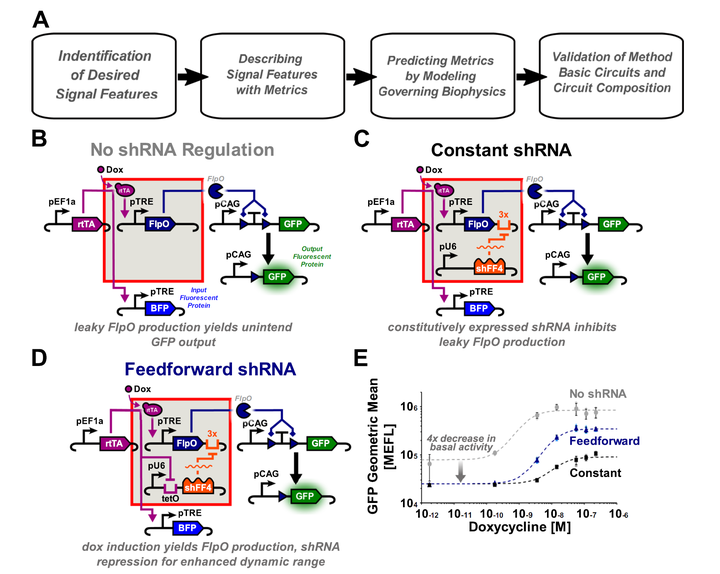Quantitative Characterization of Recombinase-Based Digitizer Circuits Enables Predictable Amplification of Biological Signals

Abstract
Many synthetic gene circuits are restricted to single-use applications or require iterative refinement for incorporation into complex systems. One example is the recombinase-based digitizer circuit, which has been used to improve weak or leaky biological signals. Here we present a workflow to quantitatively define digitizer performance and predict responses to different input signals. Using a combination of signal-to-noise ratio (SNR), area under a receiver operating characteristic curve (AUC), and fold change (FC), we evaluate three small-molecule inducible digitizer designs demonstrating FC up to 508x and SNR up to 3.77 dB. To study their behavior further and improve modularity, we develop a mixed phenotypic/mechanistic model capable of predicting digitizer configurations that amplify a synNotch cell-to-cell communication signal ($Δ$ SNR up to 2.8 dB). We hope the metrics and modeling approaches here will facilitate incorporation of these digitizers into other systems while providing an improved workflow for gene circuit characterization. Kiwimagi & Letendre et al. present a workflow to quantitatively define recombinase-based digitizer and predict responses to different input signals. With a mechanistic/phenotypic model that can predict circuit performance, they generate a synthetic cell-cell communication device that amplifies a synNotch output signal.